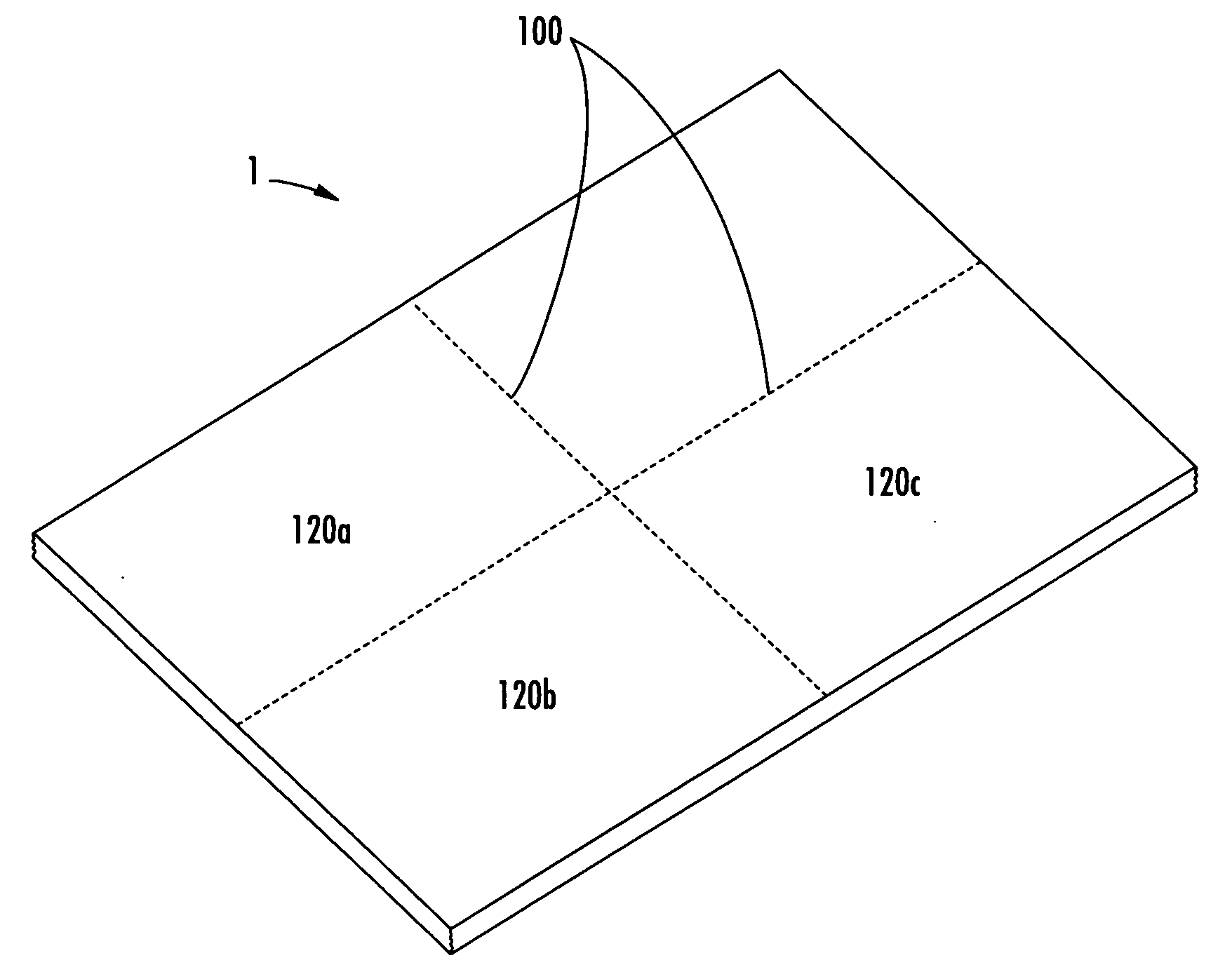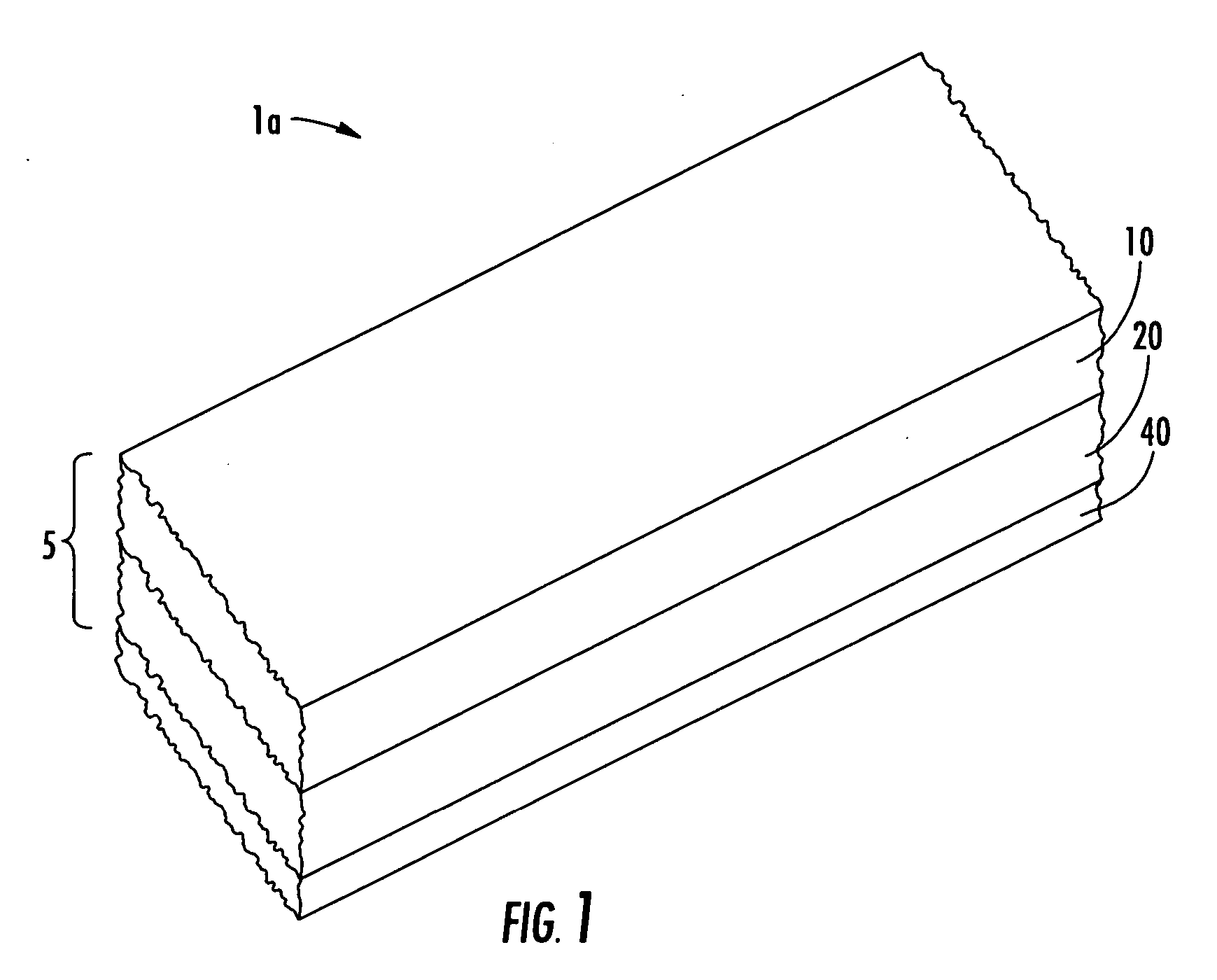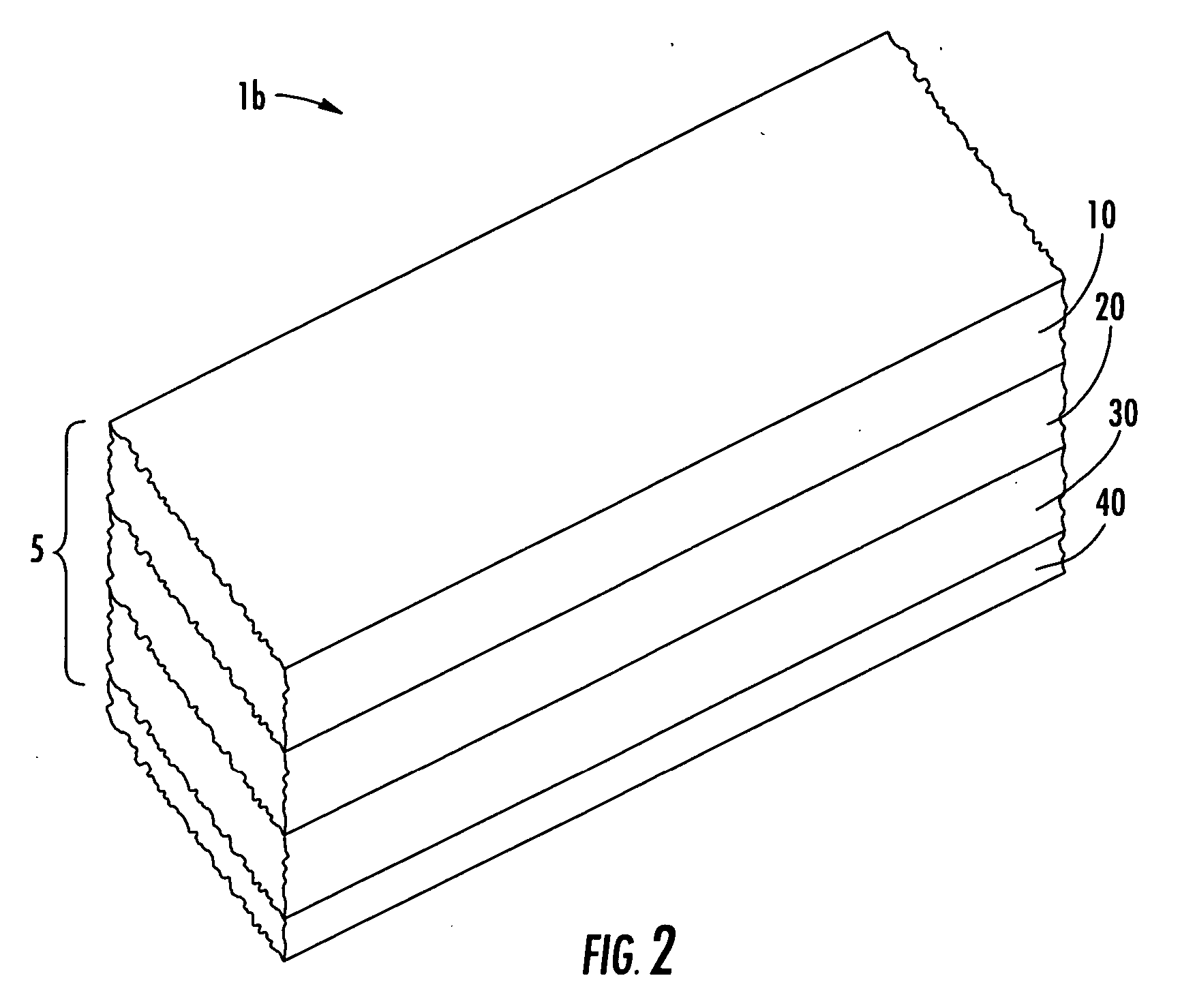Absorbent non-woven mat having perforations or scoring
a non-woven mat and perforation technology, applied in the field of absorbent mats, can solve the problems of insufficient absorbency of mats to absorb large volumes of liquid, mats to slip or gather under hospital staff, etc., and achieve the effect of easy torn
- Summary
- Abstract
- Description
- Claims
- Application Information
AI Technical Summary
Benefits of technology
Problems solved by technology
Method used
Image
Examples
Embodiment Construction
[0020] The present inventions now will be described more fully hereinafter with reference to the accompanying drawings, in which some, but not all embodiments of the inventions are shown. Indeed, these inventions may be embodied in many different forms and should not be construed as limited to the embodiments set forth herein; rather, these embodiments are provided so that this disclosure will satisfy applicable legal requirements. Like numbers refer to like elements throughout.
[0021] As used herein, terms such as “upper”, “intermediate”, and “lower” are used as positional terms to identify the orientation of the various layers of the mat with respect to one another and are not otherwise limiting to the description or use of the mat. As used herein, the term “laminate” is used to describe a nonwoven structure having multiple layers where each layer is contacted in a face-to-face relationship with its adjacent layer or layers.
[0022] As used herein, the term “nonwoven” refers to a f...
PUM
 Login to View More
Login to View More Abstract
Description
Claims
Application Information
 Login to View More
Login to View More - R&D
- Intellectual Property
- Life Sciences
- Materials
- Tech Scout
- Unparalleled Data Quality
- Higher Quality Content
- 60% Fewer Hallucinations
Browse by: Latest US Patents, China's latest patents, Technical Efficacy Thesaurus, Application Domain, Technology Topic, Popular Technical Reports.
© 2025 PatSnap. All rights reserved.Legal|Privacy policy|Modern Slavery Act Transparency Statement|Sitemap|About US| Contact US: help@patsnap.com



